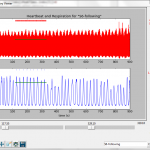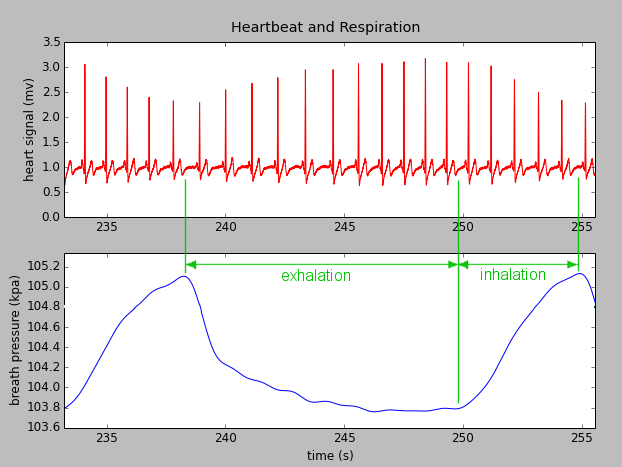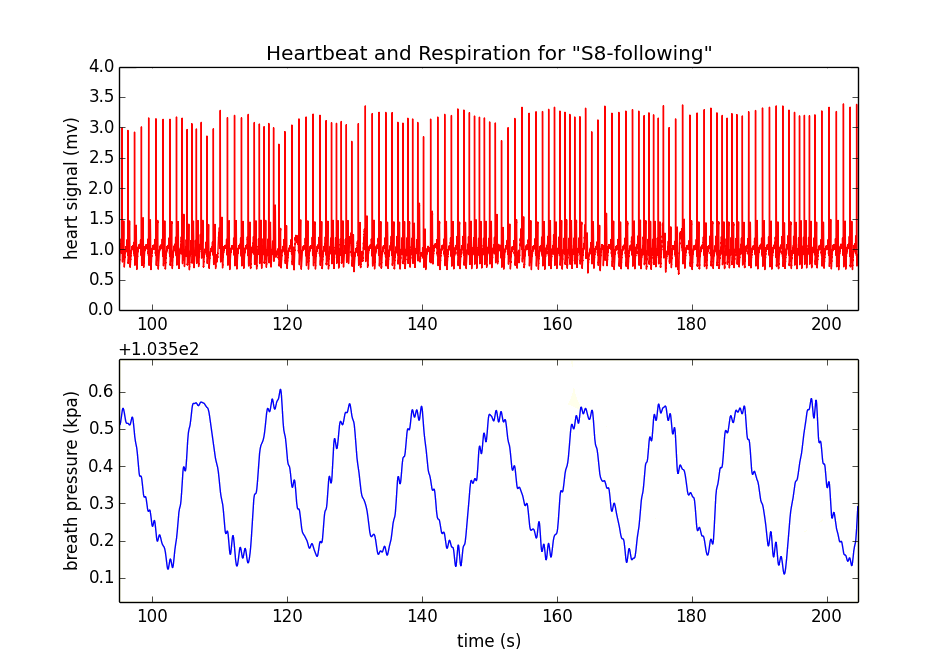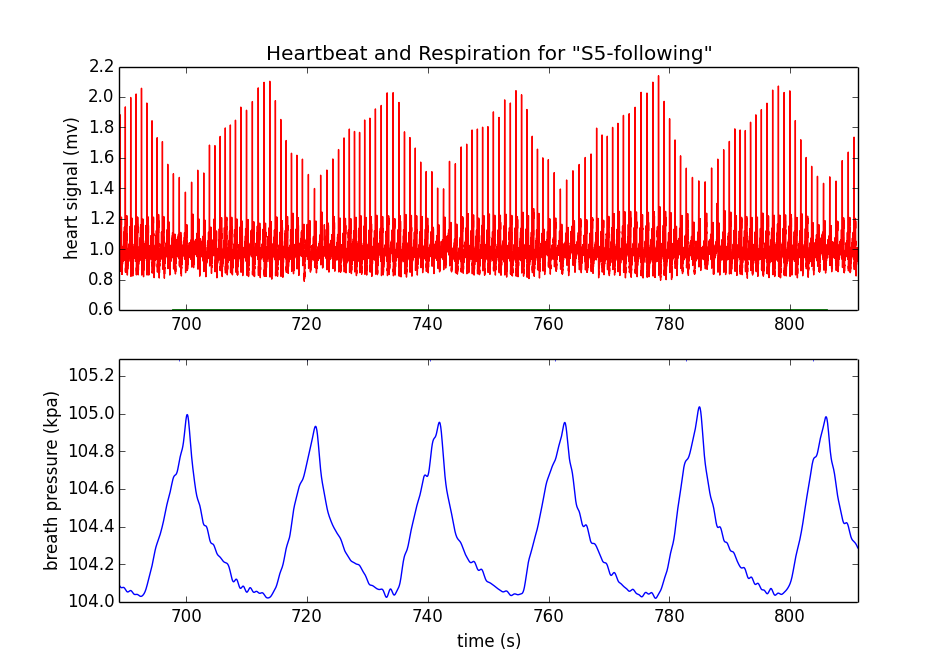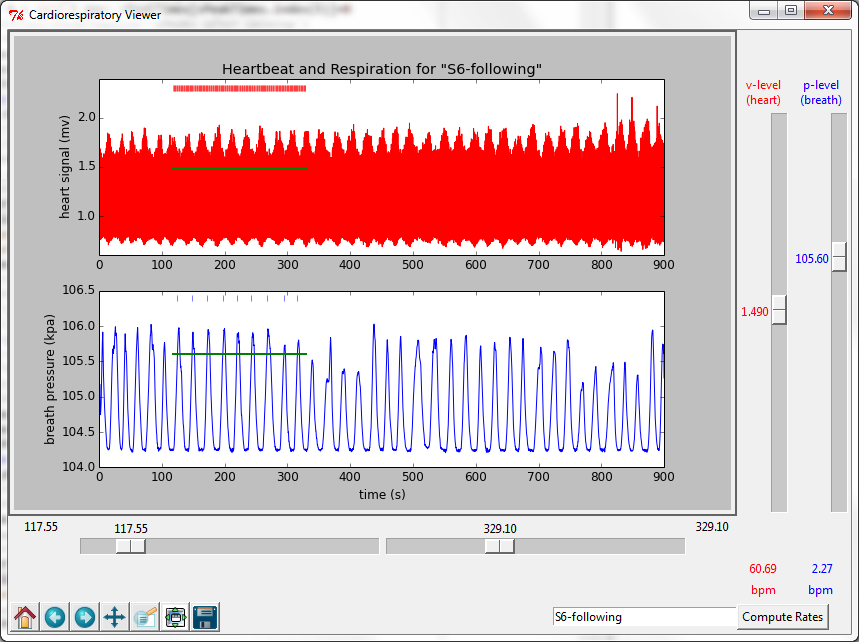To explore the physiology of zazen, we began by recording respiration and heart rhythms using a respiration monitor and an electrocardiographic (ECG) sensor.
Eight subjects participated in the study. Some had training in zazen; others had experience with other meditative traditions (Vipassana, Yogic). Electrocardiogram and respiration data were collected for both meditative (counting the breath) and non-meditative (reading) conditions. Sessions were about 20 minutes long.
A Cardiorespiratory Viewer computer program was developed to aid in the display and analysis of the breath and heart data.
Results were as follows:

Breathing rate among eight subjects for meditative vs. non-meditative conditions. Rates during reading were typically double or greater compared to meditation.
At least among these eight subjects, trained in Zen, Vipassana and Yoga, breath rate was substantially slower (by at least a factor of two) during meditation than during reading. This is not surprising, given that these ancient traditions have a common origin.
In addition, we noted that heart rate did not vary appreciatively between the meditation condition and non-meditative reading. Again, this is expected as our heart rate is not usually under our conscious control and it is generally not part of meditation training.
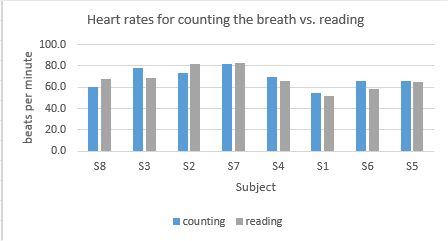
Heart rate among eight subjects under meditative and non-meditative conditions. Rates were not significantly different during counting, following the breath or reading.
